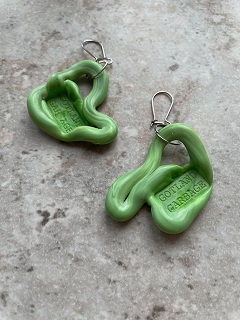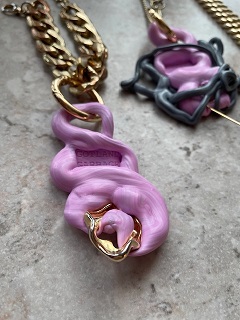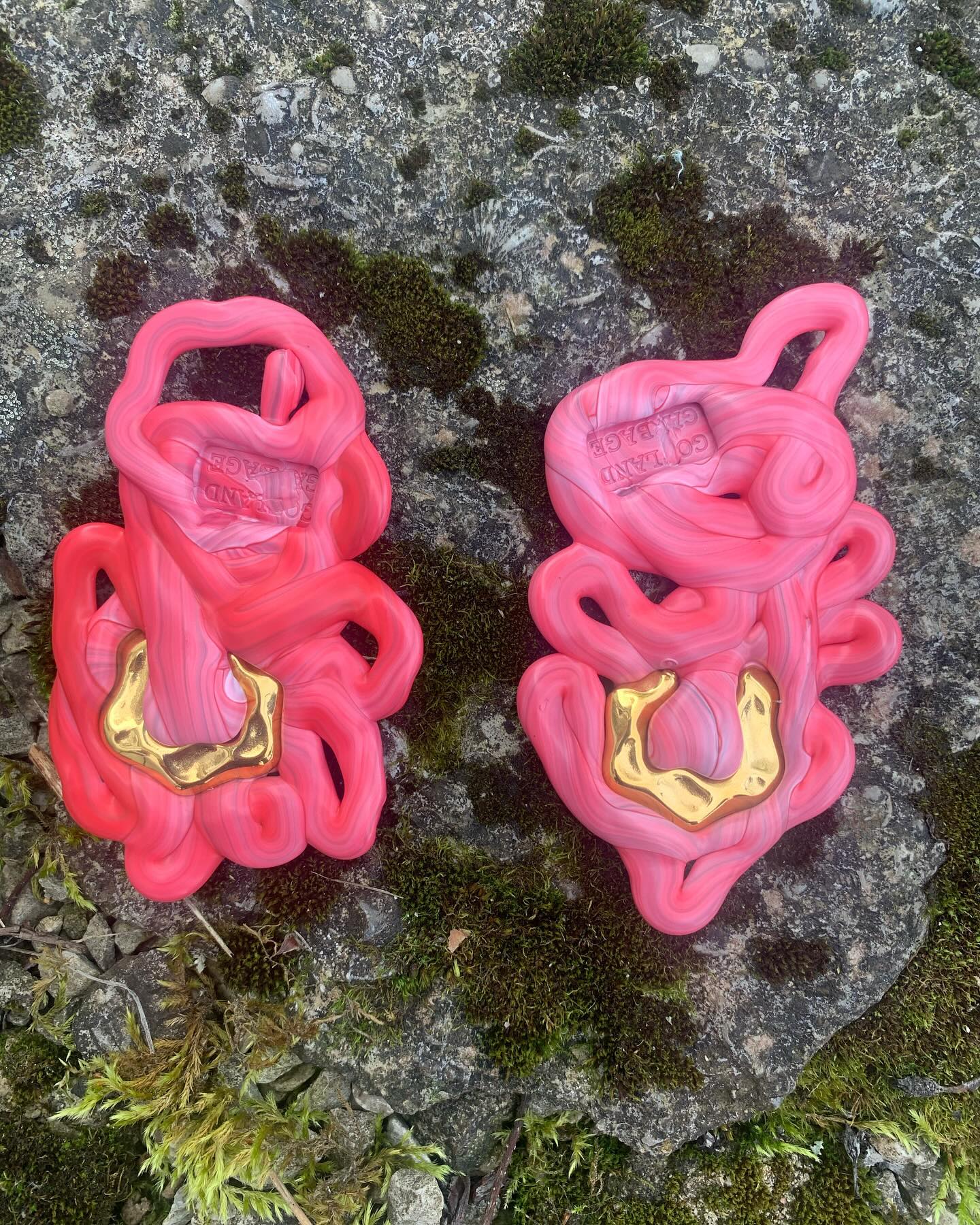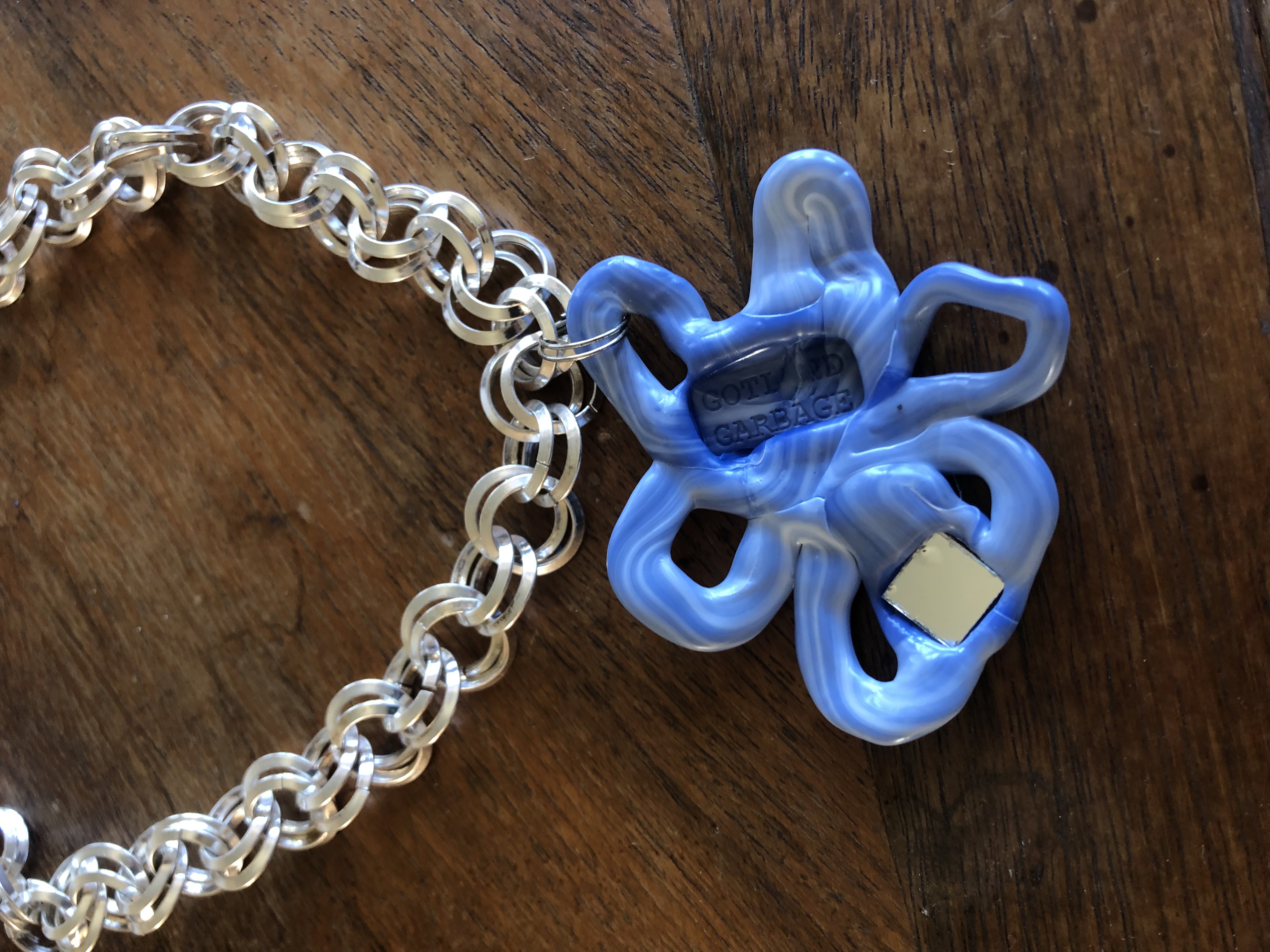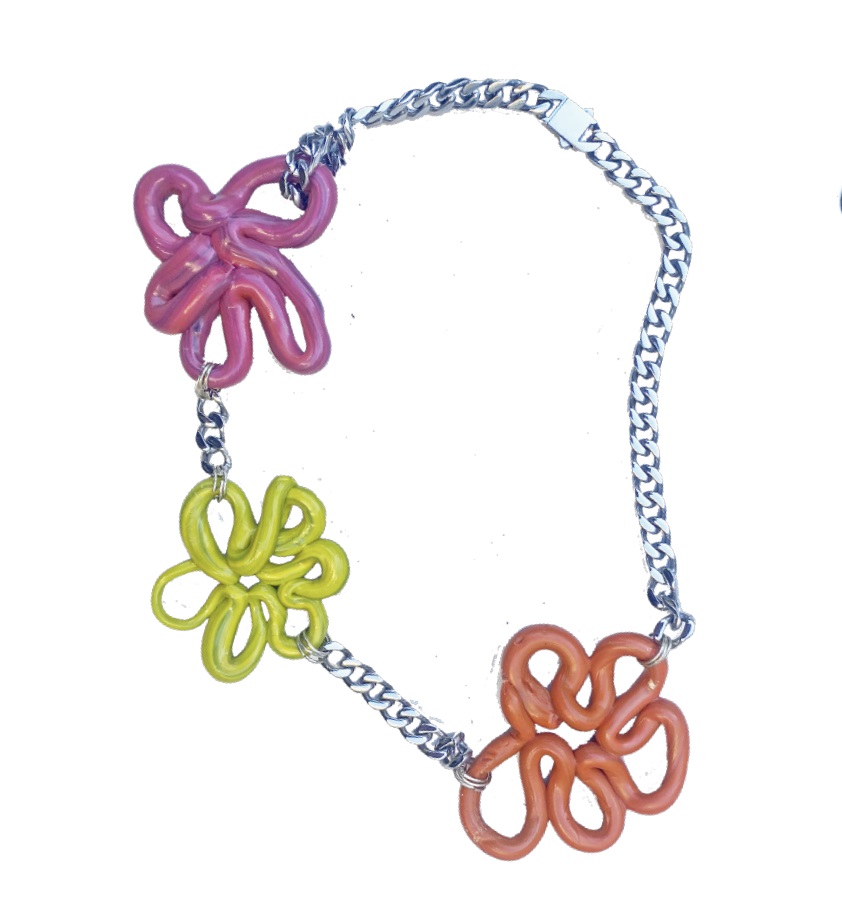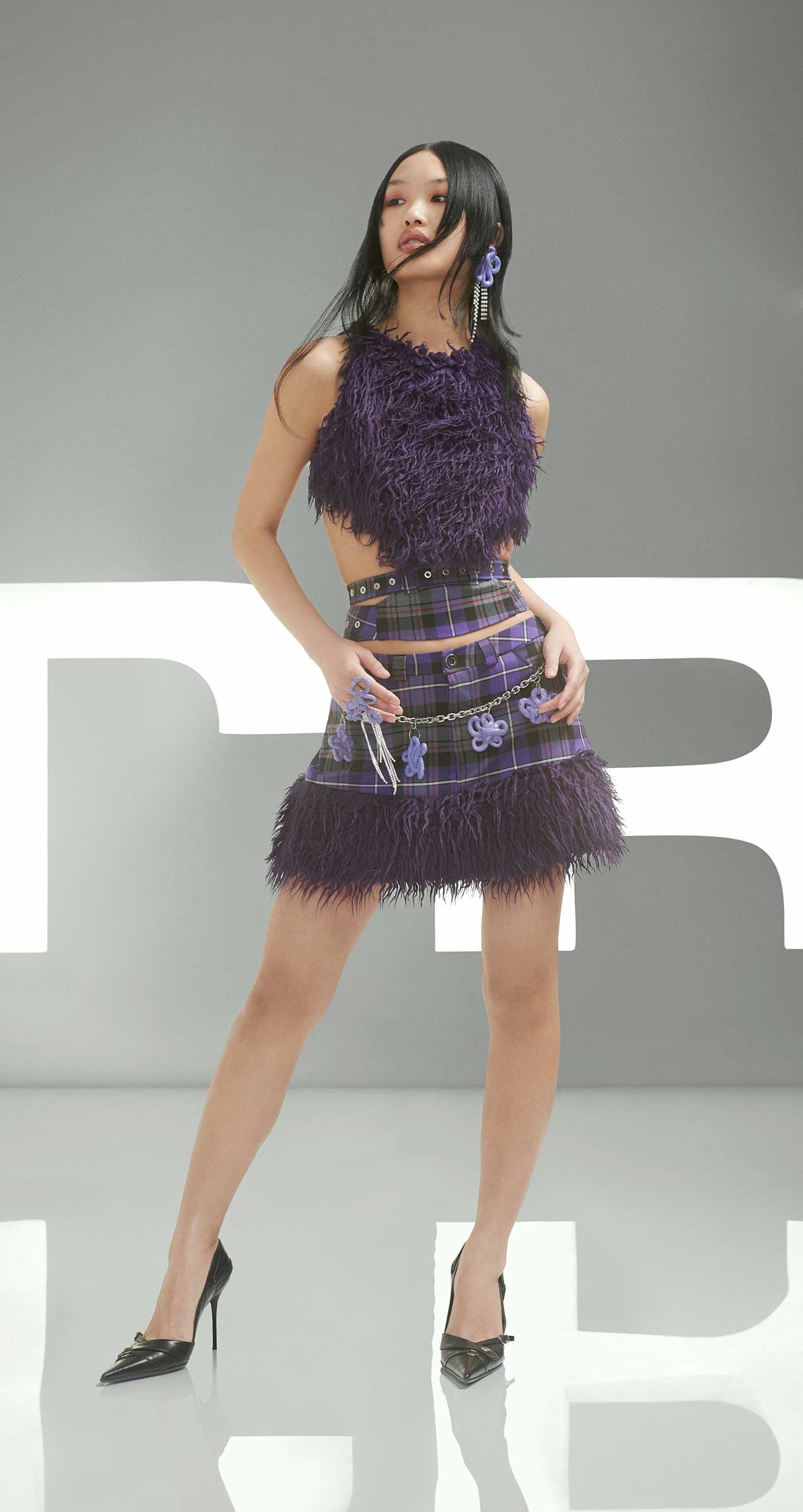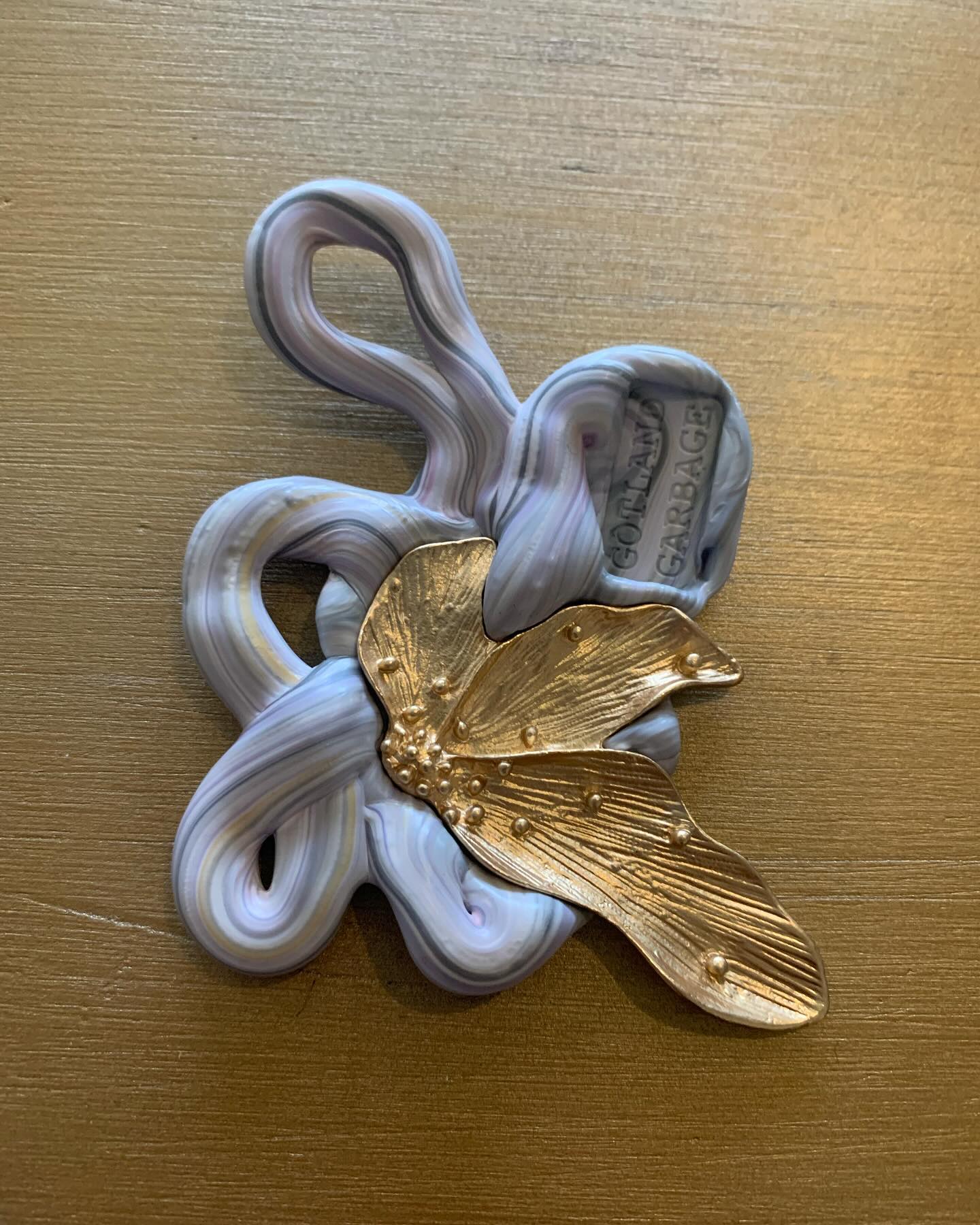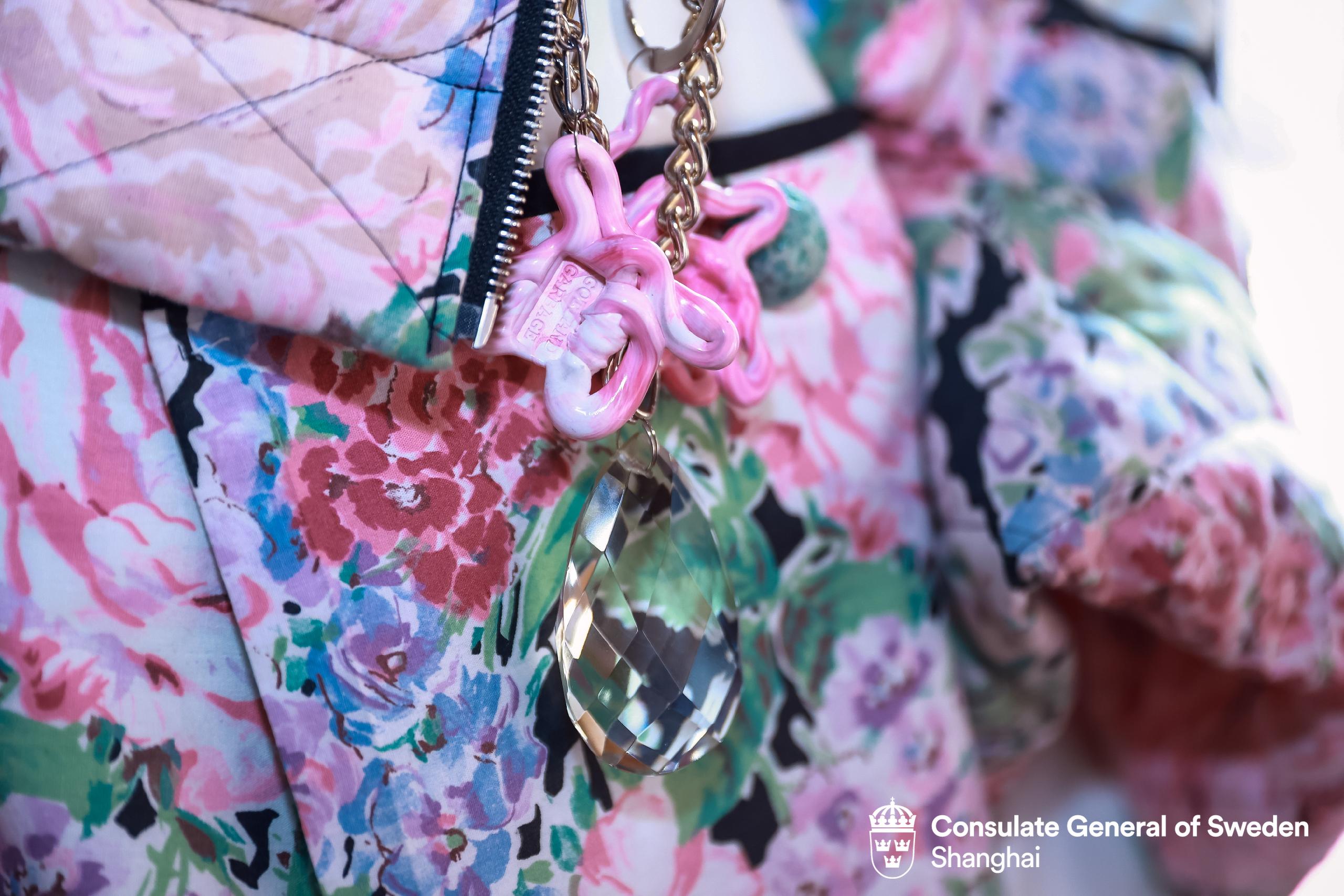Regaining a sense of belonging
Gotland Garbage Glows
From worn-out toys to high-end jewelry - transforming plastic waste into new products!
Wear the climate transition!
Get a one-of-a-kind jewelry piece made from a repurposed sled or broken toy.
At Gotland Garbage’s studio, old plastic waste is turned into luxury jewelry. Sleds, mugs, and ice cream tubs become stunning accessories, letting you contribute to climate action with style.
Together, we make a difference, one sled at a time.
Get a one-of-a-kind jewelry piece made from a repurposed sled or broken toy.
At Gotland Garbage’s studio, old plastic waste is turned into luxury jewelry. Sleds, mugs, and ice cream tubs become stunning accessories, letting you contribute to climate action with style.
Together, we make a difference, one sled at a time.
Sweden
Local
The Swedish island Gotland
Mainly rural
It refers to other types of transformations (soft investment)
Yes
2024-12-13
No
No
No
As a representative of an organisation
By involving people in collecting plastic waste, which is then transformed into jewelry, we create a sense of community both in the collection process and among those who choose to wear the pieces. The jewelry project aims to show how broken toys and plastic waste are turned into stylish, eco-conscious jewelry worn by vibrant individuals who stand up for the climate without compromising on fashion. The result: less plastic in nature, more people engaged in recycling, and satisfied jewelry wearers. Every piece serves the environment, and everyone involved feels a sense of unity—with each other, with the planet, and with the understanding that waste isn’t waste when it holds value.
Recycling
Unity
Sustainability
Eco-conscious
Empowerment
The main objectives of the jewelry project have been social sustainability and sustainability in terms of recycling plastic waste. The project involves people in collecting trash or gathering it, which increases environmental awareness and engagement, while fostering a sense of belonging and the opportunity to contribute, no matter who you are. The wearers of the jewelry are also part of this community, belonging to a group that cares for the planet. They take pride in this, and the jewelry serves as a visible representation of their commitment to sustainability. The project can serve as an example in this context, as the jewelry has been worn at Paris Fashion Week and at a fashion show in China, demonstrating the global impact and appeal of sustainable fashion. Through this, the project not only promotes recycling but also creates a shared sense of purpose, uniting people around a common cause for the planet's future.
Gotland Garbage’s unique design language ensures that every piece of jewelry is one-of-a-kind, and the consistent design technique developed clearly indicates that each piece is crafted at Gotland Garbage. The technique, known as “free flow,” is created through free movements of an injection machine. The aesthetic can be interpreted as “wabi-sabi,” with a clear message: it shows that unique, imperfect, and flowing jewelry can be made from recycled plastic waste—plastic that is often viewed as single-use, mass-produced, and uniform in appearance.
Because the jewelry is made from recycled plastic waste, the colors are determined by the original plastic material, setting an example for future generations who will need to recycle materials, knowing they won’t always get an exact shade. It also highlights the possibility of creating unique pieces from materials that were once mass-produced products, often found in millions of copies. This approach challenges conventional ideas about mass production and perfection, presenting a new way of seeing value in what is discarded.
The project sets a powerful precedent for sustainable design, emphasizing the beauty of imperfection and the potential for transforming waste into something valuable. By embracing these principles, Gotland Garbage not only offers high-quality, aesthetically captivating jewelry but also provides a cultural shift in how we view waste and recycling. The jewelry symbolizes both a commitment to the environment and a celebration of individuality in a world that often prioritizes conformity.
Because the jewelry is made from recycled plastic waste, the colors are determined by the original plastic material, setting an example for future generations who will need to recycle materials, knowing they won’t always get an exact shade. It also highlights the possibility of creating unique pieces from materials that were once mass-produced products, often found in millions of copies. This approach challenges conventional ideas about mass production and perfection, presenting a new way of seeing value in what is discarded.
The project sets a powerful precedent for sustainable design, emphasizing the beauty of imperfection and the potential for transforming waste into something valuable. By embracing these principles, Gotland Garbage not only offers high-quality, aesthetically captivating jewelry but also provides a cultural shift in how we view waste and recycling. The jewelry symbolizes both a commitment to the environment and a celebration of individuality in a world that often prioritizes conformity.
Anyone, individually or in a group, can be part of small-scale plastic recycling. There is an abundance of plastic waste in the world, which provides an excellent resource to repurpose and transform. With simple techniques, people can develop their own design language and create new products.
Jewelry from Gotland Garbage demonstrates how food packaging and toys can be turned into highly appreciated jewelry. The world needs to rethink its approach to resources, how we view raw materials, and recycling—whether large or small, local or global.
Gotland Garbage is a small part of something much bigger, serving as an exemplary model that shows it’s possible to contribute to something larger on a small scale. The project embodies inclusive governance by creating an open space where anyone can engage in the process of recycling, learn new skills, and produce meaningful items. Through this approach, it fosters a sense of community and collective ownership, emphasizing the idea that everyone can play a role in reshaping the way we think about waste, resources, and sustainability.
This inclusive system promotes accessibility, as people from all walks of life can participate in the recycling process, regardless of background or experience. It also demonstrates that small-scale, local efforts can have a global impact, highlighting the power of collective action in creating positive environmental and social change.
Jewelry from Gotland Garbage demonstrates how food packaging and toys can be turned into highly appreciated jewelry. The world needs to rethink its approach to resources, how we view raw materials, and recycling—whether large or small, local or global.
Gotland Garbage is a small part of something much bigger, serving as an exemplary model that shows it’s possible to contribute to something larger on a small scale. The project embodies inclusive governance by creating an open space where anyone can engage in the process of recycling, learn new skills, and produce meaningful items. Through this approach, it fosters a sense of community and collective ownership, emphasizing the idea that everyone can play a role in reshaping the way we think about waste, resources, and sustainability.
This inclusive system promotes accessibility, as people from all walks of life can participate in the recycling process, regardless of background or experience. It also demonstrates that small-scale, local efforts can have a global impact, highlighting the power of collective action in creating positive environmental and social change.
Without the involvement and help of civil society and citizens, I wouldn’t have been able to collect all the plastic waste that was transformed into new products. This has not only been about participation, but also about knowledge sharing—where people learn more about plastic, waste, and how it can be seen as a resource and raw material rather than something to be discarded.
Young participants find it fulfilling to see how their old toys are repurposed into something new, and the older participants share the same sentiment. The simplicity and transparency of the process make it easy for everyone to understand how plastic recycling works—and how, through their own actions, they can contribute to improving their local environment.
This project fosters a sense of ownership and empowerment. By engaging people of all ages, we’re not only transforming waste but also changing mindsets, showing that sustainability is something anyone can take part in.
Young participants find it fulfilling to see how their old toys are repurposed into something new, and the older participants share the same sentiment. The simplicity and transparency of the process make it easy for everyone to understand how plastic recycling works—and how, through their own actions, they can contribute to improving their local environment.
This project fosters a sense of ownership and empowerment. By engaging people of all ages, we’re not only transforming waste but also changing mindsets, showing that sustainability is something anyone can take part in.
International stakeholders have contributed valuable knowledge about plastic and the studio itself, which has been crucial for understanding how plastic waste can be recycled on a small scale. Global networking plays a major role in spreading knowledge, as this type of expertise is almost non-existent at the national level.
Locally and regionally, stakeholders have supported the project through networking and providing incentives, showing appreciation for the new products. Their involvement has helped foster a sense of community and collective responsibility.
Customers who have chosen to purchase, wear, or invest in the finished jewelry are found both nationally and internationally. While plastic waste is a global issue, it’s clear that much can be done locally. By engaging people at all levels, we create both awareness and action, proving that even small efforts can have a significant impact on the environment. This project highlights the power of collaboration, knowledge exchange, and local initiative in tackling global challenges.
Locally and regionally, stakeholders have supported the project through networking and providing incentives, showing appreciation for the new products. Their involvement has helped foster a sense of community and collective responsibility.
Customers who have chosen to purchase, wear, or invest in the finished jewelry are found both nationally and internationally. While plastic waste is a global issue, it’s clear that much can be done locally. By engaging people at all levels, we create both awareness and action, proving that even small efforts can have a significant impact on the environment. This project highlights the power of collaboration, knowledge exchange, and local initiative in tackling global challenges.
Representatives who have contributed to this process primarily come from other design disciplines, such as metalworking, craftsmanship, and textile artistry. These collaborators have shared valuable knowledge from their respective fields, enriching the design and execution of the jewelry. This cross-disciplinary interaction has not only expanded the creative possibilities of the project but also added significant value by combining diverse techniques and perspectives. The result is a collection that is not only visually striking but also showcases the importance of high-quality design work and innovative material use in transforming waste into art.
Common methods for making jewelry typically involve using virgin plastic and mass-producing pieces in large factories. Other common practices include working with various materials and producing items on a large scale. Of course, many smaller artisans also create handcrafted jewelry using different materials.
However, the approach of engaging the local community to collect plastic waste, which is then transformed by hand using the free flow technique and partially incorporating metal parts, is distinctly innovative and rare. This process stands out especially because it utilizes an injection molding machine, but without the use of traditional molds. This unique method allows for the creation of one-of-a-kind pieces that embrace the irregularities and imperfections of repurposed materials. The integration of recycled plastic waste into the design not only contributes to sustainability but also introduces a fresh, creative perspective into the jewelry-making process—transforming discarded materials into valuable, high-quality designs.
However, the approach of engaging the local community to collect plastic waste, which is then transformed by hand using the free flow technique and partially incorporating metal parts, is distinctly innovative and rare. This process stands out especially because it utilizes an injection molding machine, but without the use of traditional molds. This unique method allows for the creation of one-of-a-kind pieces that embrace the irregularities and imperfections of repurposed materials. The integration of recycled plastic waste into the design not only contributes to sustainability but also introduces a fresh, creative perspective into the jewelry-making process—transforming discarded materials into valuable, high-quality designs.
The design of the free-flow jewelry is based on a completely unique, self-developed technology, and the result stands out in its distinctive creations. The concept behind creating free-flow jewelry is to demonstrate how plastic can be transformed from what is typically viewed as disposable, mass-produced items into something free-flowing and organic. It shows that plastic can become unique, and no two pieces of jewelry are ever identical. They are imperfect, asymmetrical, and their colors are derived from the original plastic packaging.
Because the jewelry is created using an injection molding machine, the pieces may feature color variations when different types of plastic are blended together. This fluidity of color and form is a hallmark of the design process, embracing the unpredictability and beauty found in imperfections.
Another technique that has been developed is the integration of metal parts into the jewelry, often sourced from broken or discarded pieces of jewelry. This is done while the plastic is still warm and malleable, allowing the metals to be seamlessly incorporated before the plastic hardens.
Because the jewelry is created using an injection molding machine, the pieces may feature color variations when different types of plastic are blended together. This fluidity of color and form is a hallmark of the design process, embracing the unpredictability and beauty found in imperfections.
Another technique that has been developed is the integration of metal parts into the jewelry, often sourced from broken or discarded pieces of jewelry. This is done while the plastic is still warm and malleable, allowing the metals to be seamlessly incorporated before the plastic hardens.
Gotland Garbage focuses on fostering knowledge exchange, a strong design language, and extensive inclusion of others who contribute (and thus become part of the change in the perception of plastic waste). Gotland Garbage also has the ability to spread knowledge and inspiration about different types of plastics, how to recycle them effectively, and the dangers that should be avoided. There are opportunities to both transfer knowledge and replicate practices, as well as encourage individual creativity when it comes to managing plastic waste and transforming it into new products.
Globally, there are several small workshops where plastic waste is recycled on a small scale, as well as a network called Precious Plastic, which is at the forefront of this development. Gotland Garbage is part of this movement, and collectively there is a wealth of knowledge that can be shared—and is being shared—to tackle the plastic waste problem.
Globally, there are several small workshops where plastic waste is recycled on a small scale, as well as a network called Precious Plastic, which is at the forefront of this development. Gotland Garbage is part of this movement, and collectively there is a wealth of knowledge that can be shared—and is being shared—to tackle the plastic waste problem.
Operating locally to be part of a global solution is essential to addressing the issue of plastic waste. It’s about providing knowledge so that people can make informed, responsible choices, from consumption to post-consumption. Reaching both decision-makers and future generations at the grassroots level is necessary to influence and shift the perception of plastic—not as waste, but as a valuable raw material.
Gotland Garbage has chosen to position itself as a valuable player within the fashion industry, another sector with significant challenges. By creating jewelry, the pieces serve as clear statements worn by the individuals who own them. This spreads awareness and takes up space in everyday life. Far from broken sleds and empty ice cream containers, they are transformed into a glamorous part of people’s daily routines.
Demonstrating that it is possible to make a difference locally reminds us globally of both the challenges and the opportunities. By showing that local solutions can have a broader impact, Gotland Garbage reinforces the importance of sustainability in practical, visible ways.
Gotland Garbage has chosen to position itself as a valuable player within the fashion industry, another sector with significant challenges. By creating jewelry, the pieces serve as clear statements worn by the individuals who own them. This spreads awareness and takes up space in everyday life. Far from broken sleds and empty ice cream containers, they are transformed into a glamorous part of people’s daily routines.
Demonstrating that it is possible to make a difference locally reminds us globally of both the challenges and the opportunities. By showing that local solutions can have a broader impact, Gotland Garbage reinforces the importance of sustainability in practical, visible ways.
Creating jewelry from recycled plastic waste has primarily increased community inclusion and spread knowledge about plastic and its challenges and opportunities. The jewelry has also been worn by people at fashion shows, further promoting inclusion and social connection. Deliberately wearing a unique and exclusive piece of jewelry made from plastic waste is a statement for the climate and nature.
Additionally, the project has led to a reduction in plastic waste that would otherwise have polluted the environment or been burned. It’s not waste when you give it value. Plastic deserves to be recycled over and over again, transforming into a resource and raw material.
Gotland Garbage and everyone involved in the project are fostering a sense of belonging, not only among individuals but also in the realization that we all share this amazing planet. The project reflects a spirit of resilience and determination, proving that small, local actions can drive real change and contribute to a broader global effort. By transforming waste into something valuable, we inspire others to rethink the potential of what’s often discarded and forgotten.
Additionally, the project has led to a reduction in plastic waste that would otherwise have polluted the environment or been burned. It’s not waste when you give it value. Plastic deserves to be recycled over and over again, transforming into a resource and raw material.
Gotland Garbage and everyone involved in the project are fostering a sense of belonging, not only among individuals but also in the realization that we all share this amazing planet. The project reflects a spirit of resilience and determination, proving that small, local actions can drive real change and contribute to a broader global effort. By transforming waste into something valuable, we inspire others to rethink the potential of what’s often discarded and forgotten.

